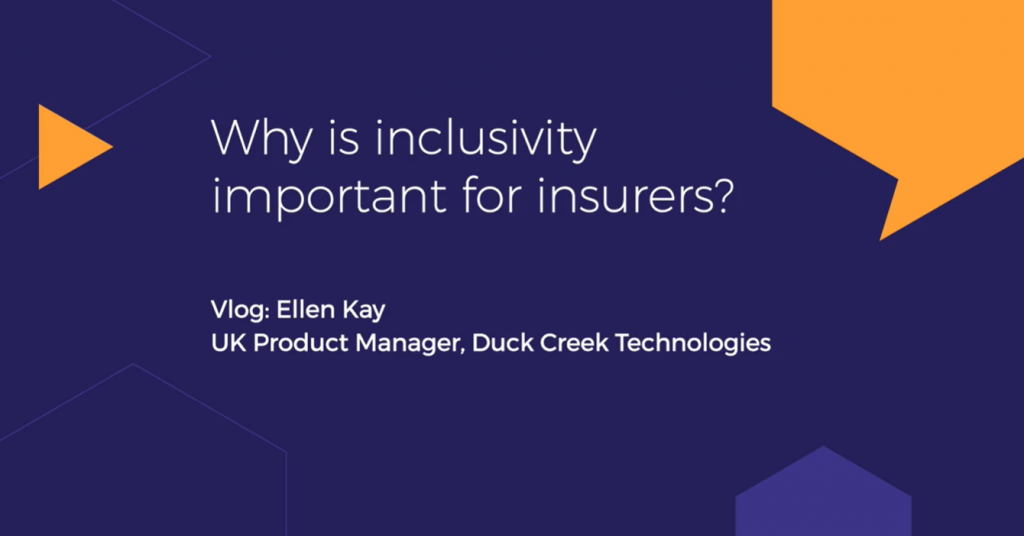Why is inclusivity important for insurers?
Duck Creek has an inclusive design philosophy, explains Ellen Kay, UK Product Manager at Duck Creek, in the first in a series of vlogs exploring inclusivity in insurance.
Accessibility provides for the foundation for building inclusivity into insurance.
It does this by improving the user experience of someone with a limiting condition, such as hearing or visual impairment, creating the conditions necessary for inclusivity.
Screen readers and voice recognition technology are examples of enablers to accessibility that a software vendor, such as Duck Creek, can bring to the party.
“At Duck Creek we’re thinking about true inclusivity. Instead of focusing on a single challenge to overcome, inclusivity is referred to as universal design, or a design-for-all approach. It’s thinking about human diversity of both abilities and experiences,” says Kay.
From a technology perspective, it means encompassing accessibility for people with disabilities, and access to different quality of hardware, software or internet connectivity, different levels of computer literacy and skills, education and mental health, geographic location, culture, gender, age and language.
“Inclusivity draws on all of this. Here at Duck Creek we have a user experience team, dedicated to actionable steps towards inclusive design for both our customers and their end users,” Kay adds.
Why should insurers be thinking about inclusivity?
“Firstly, it’s a great thing to do. I don’t think anyone wants to see anyone, whether it’s friends, family or strangers excluded from this. The second is that it’s good for business,” says Kay.
More than one billion people face some sort of challenge of impairment, globally. Including them and solving the challenges they face accessing insurance can lead to an increased market share.
Duck Creek focuses on its customers as well as their end users, she emphasises, with an enterprise-wide emphasis on diversity and inclusion.
“A more diverse workforce generally drives greater creativity in problem solving for customers who are experiencing the same issues. This means insurers are likely to hire a broader range of people, be more diverse and inclusive in their hiring strategies,” Kay adds.


